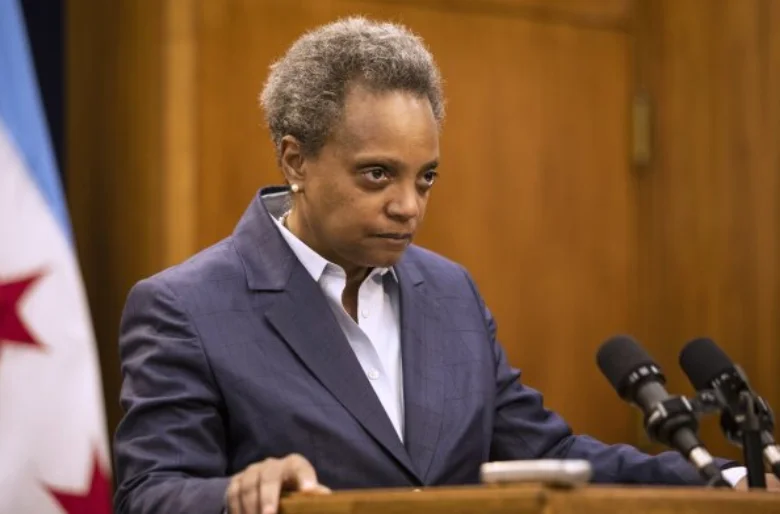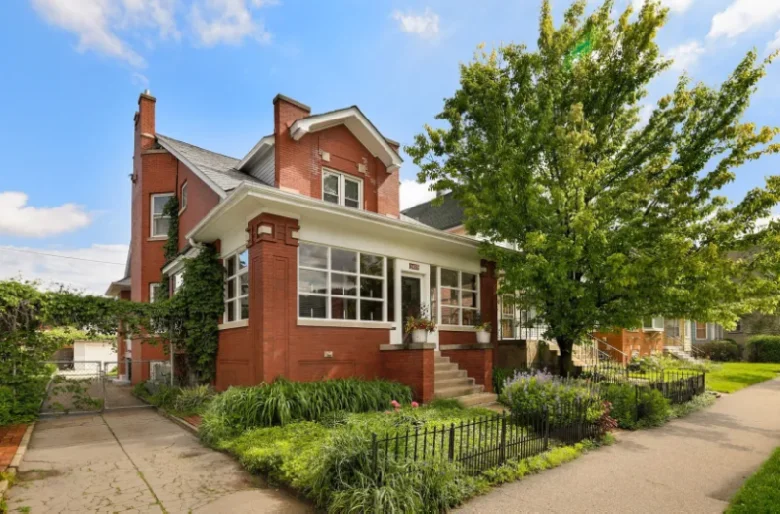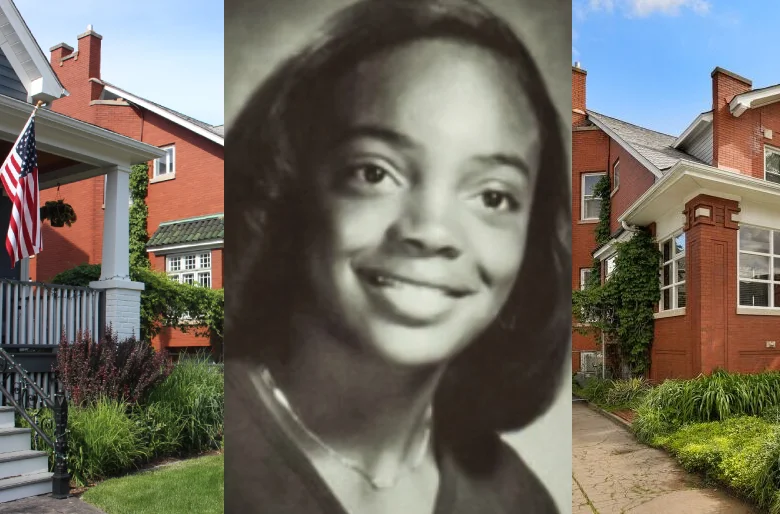Have you ever wondered what it’s like to live next door to a mayor? Well, the residents of a certain block in Chicago’s Logan Square neighborhood can tell you all about it.
Let’s dive into the story of the Lori Lightfoot house and how it transformed a quiet street into what some locals jokingly called “Fort Lori.”
Who is Lori Lightfoot?

Lori Lightfoot made history in 2019 when she became the mayor of Chicago. She wasn’t just any mayor, though. Lightfoot was the first openly lesbian Black woman to lead a major U.S. city. That’s pretty cool, right? During her time as mayor from 2019 to 2023, she focused on things like police reform and ran the city with a no-nonsense approach.
But being mayor isn’t all handshakes and ribbon-cutting ceremonies. It can be a tough job, especially when some people don’t agree with your decisions. This is where our story of the Lori Lightfoot house begins.
Welcome to the Neighborhood
Imagine living on a street where one of your neighbors is the mayor of a big city like Chicago. That’s exactly what happened to the folks living on the 3400 block of North Wrightwood Avenue in Logan Square. This diverse community suddenly found itself at the center of attention when Lightfoot moved in.
Logan Square is known for its cool vibe, with lots of great restaurants and parks. But with Lightfoot’s arrival, it became known for something else entirely – security measures that would make Fort Knox jealous!
Fort Lori: Security on Steroids
When Lightfoot became mayor, her home didn’t just get a new resident – it got a whole new look. Picture this: over 70 police officers, barricades blocking the street, and ID checks for anyone wanting to enter the block. It was like the neighborhood had its own VIP section!
In 2020, the Chicago Police Department even created a special unit called Unit 544. Their job? To guard Lightfoot’s home, City Hall, and look after her bodyguards. Talk about a job with responsibility!
But wait, there’s more! Lightfoot also banned protests on her block. Can you imagine not being allowed to have a protest on your street? It was like living in a completely different world for some of the neighbors.
Why All the Fuss?
Now, you might be thinking, “Isn’t this a bit much for one person?” Well, there were some pretty serious reasons for all this security. Lightfoot faced threats to herself and her family. It wasn’t just empty talk either – there were some scary incidents.
One time, a man who was angry about parking tickets was accused of stalking Lightfoot and even firing shots in an alley near her home. Another person, upset about rising crime, allegedly threatened to shoot and hang both Lightfoot and another city official. Yikes! Suddenly, all those police officers don’t seem so unnecessary, do they?
Life in the Shadow of City Hall

So, what was it like for the neighbors? Well, it depended on who you asked. Some folks found it pretty frustrating. Imagine going for a run and forgetting your ID, only to be stopped from returning to your own home! One neighbor, Liz, said it felt “explicitly hostile in a diverse community.”
But it wasn’t all bad. Some neighbors saw some perks to living next to the mayor. The street was always clean, with street sweepers coming by weekly. And crime? It was practically non-existent on the block. Plus, during the early days of the pandemic, the closed-off street became a safe place for kids to ride bikes and neighbors to socialize from a distance.
The Times They Are A-Changin’
All good (or bad) things must come to an end, right? When Lightfoot’s term as mayor ended in 2023, things started to change on the block. The huge security detail shrank, the barricades came down, and life started to feel normal again.
Some neighbors were so happy they even had a champagne toast to celebrate! One resident, Liz, said it felt like the end of “martial law.” Can you imagine being so excited about your street going back to normal that you break out the bubbly?
The Neighbors Speak
With the changes, neighbors had mixed feelings. Some were thrilled to have their freedom back. No more ID checks, no more explaining to friends why they needed to go through security just to visit.
Others appreciated some aspects of the “Fort Lori” era. Sharon Maloy, who lives nearby with her family, talked about how the closed-off street during the pandemic allowed kids to play freely and neighbors to bond.
But with the security gone, some worries crept in. Just days after the police presence decreased, there was a string of catalytic converter thefts on the block. It was a reminder that while living next to the mayor had its downsides, it also had some unexpected benefits.
Wrapping It Up
The story of the Lori Lightfoot house is more than just about one politician’s home. It’s a tale of how one person’s job can change an entire neighborhood. It’s about balancing safety with freedom, and how sometimes, what’s good for one person might not be great for everyone else.
As we close this chapter on “Fort Lori,” it’s worth thinking about. If you were mayor, how would you handle your security? And if you lived next door to the mayor, how would you feel about all the changes to your street?
One thing’s for sure – the neighbors on North Wrightwood Avenue have a unique story to tell at their next block party. From ID checks to champagne toasts, they’ve seen it all. And who knows? Maybe someday, tours of Chicago will include a stop at the famous “Fort Lori” – or at least, where it used to be!


